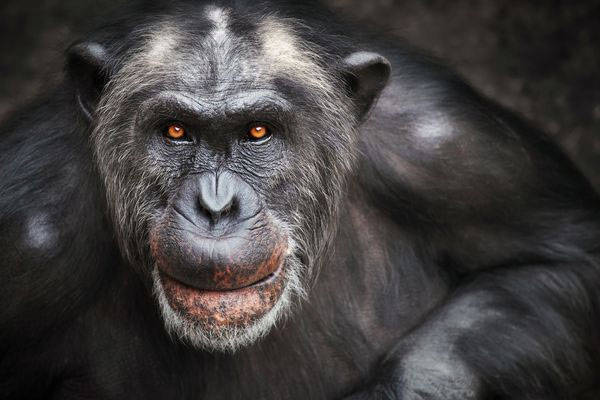Chimpanzees and orangutans also have a U-shaped happy chart
A new study says that not only people are middle-aged crises: Chimpanzees and orangutans also experience a 'sunken place' in happiness in the middle of their lives.
'Maybe what happens on the surface is different, but below all there is something common in both humans and the two animals have led to this,' said research leader Alexander Weiss, a Primate animal psychologists at Edinburgh University in Scotland said.
The team interviewed long-time caregivers of more than 500 chimpanzees and orangutans in zoos in five countries to fill out a questionnaire about the happiness of each animal they care for, including The overall mood, how many animals seem to like social interaction, and how they have achieved success goals.
The survey even asked these people to imagine themselves as those creatures and how much they want to be happy.

When Weiss's team draws the results on the graph, they see a familiar curve, which has a bottom in the life of the animals and rises again in old age. It is like a U-shaped appearance in some studies of human age and happiness.
"When you look at data around the world, you'll see this U-shaped," said Fellow Dan Buettner from National Geographic, author of the book ' Finding Happiness the Blue Zones Way' .
"It varies from country to country, but usually between 45 and 55 years old, at this age you touch the bottom of the curve, and the curve continues to rise with age. You see old people living hundreds of years older than teenagers ".
Economic and social hypotheses can explain part of the happiness curve in human life: Perhaps it is associated with the expectation of adjustment, giving up regret, or just getting a lot of things. more when we are old. But Weiss suspects there may be something more fundamental going on.
"We are talking, take a step back and look at the big picture: Is there any evidence that there is a fundamental evolutionary base under this?", Weiss said, the study was published. November 19 on the Proceedings of the National Academy of Sciences Proceedings.
Although the pattern of a middle-aged crisis is generally negative - a feeling of depression or dissatisfaction with one's life and where it is commanded, Weiss believes that such boredom may be one side on evolution.
In the middle of life, people and apes often have access to more resources than when they were young, which made it easier to achieve goals. The feeling of discontent may be the natural way of motivating us to "attack while hot iron , " Weiss said.
- Orangutans, not chimpanzees, are the closest relatives of humans
- Orangutans and chimpanzees are far away
- Close-up of chimpanzees
- Orangutans know how to brush their teeth
- Orangutans go on like a circus actor
- Primate animals also nest
- The first time chimpanzees catch crabs to eat in the wild
- Orangutans also know how to spend money
- Out of food, the orangutan hunts loris
- The chimpanzees join forces to chase apricot newspapers to occupy the antelope
- The United States banned chimpanzees for experiments
- The heartbreaking truth behind the images of orangutans stood alone in the middle of the burning forest
 Animal 'suffering' after hibernation
Animal 'suffering' after hibernation Why do goats climb well?
Why do goats climb well? Scientists were surprised to see chimpanzees eating turtles
Scientists were surprised to see chimpanzees eating turtles Giant catfish died deadly due to drought in Thailand
Giant catfish died deadly due to drought in Thailand